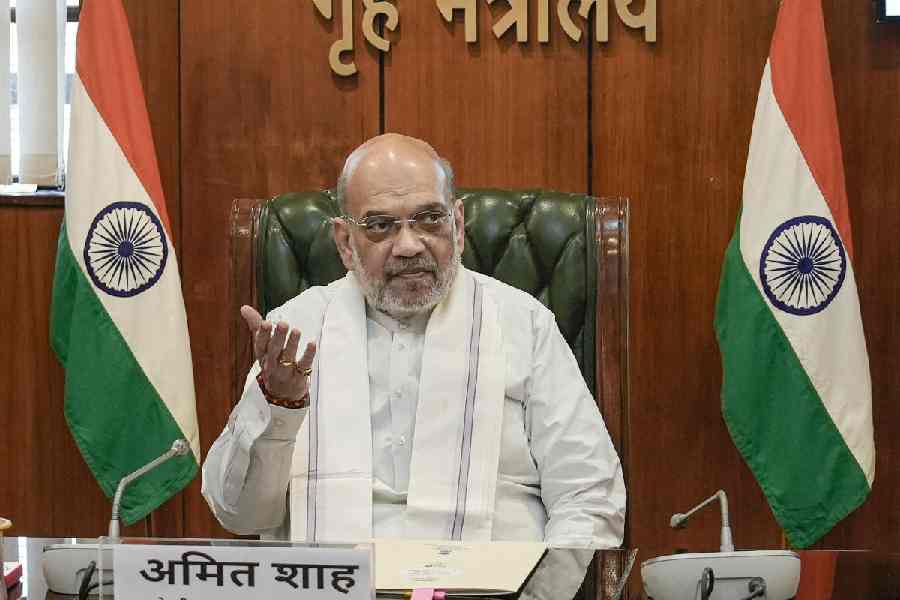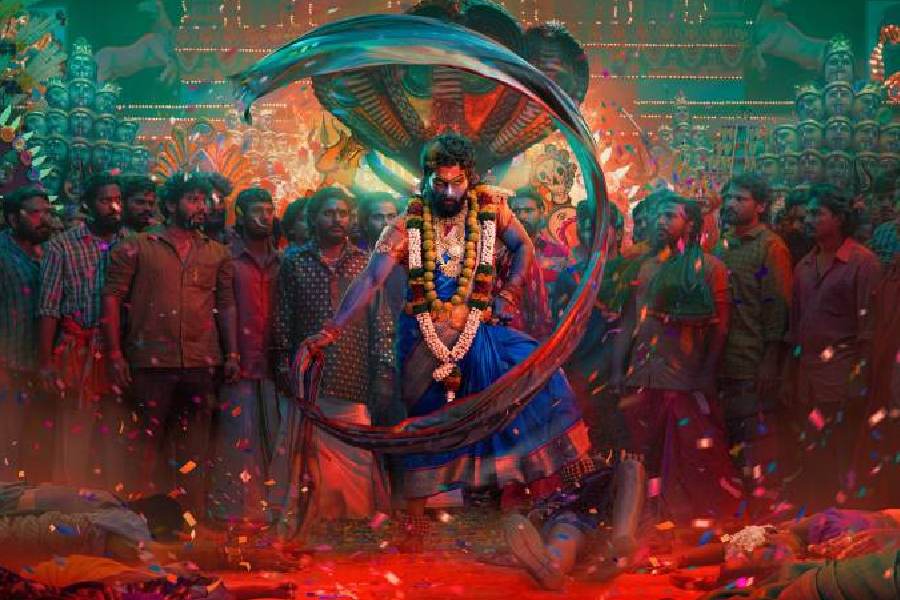It was a quarantined birthday for Belaseshe, a film that was born on May 1, five years ago. It was conceived around August-September in 2014, but on May 1, 2015, it saw the light of day. My co-director, Nandita Roy, who I call Didi, and my entire team had planned a gala music concert on that day. And if not for the deadly Covid-19 that reared its ugly head across the globe, we would have had a mega celebration for the film that scripted a major success story for us, somewhat changed the course of Bengali cinema, set the ball rolling for elderly actors in lead roles, redefined romance and showed how good content scores like nothing else.
The inception
It was after Ramdhanu, a fun film about harried parents that Didi and I started working on a love story; Belaseshe was nowhere on the horizon. As luck would have it, there were issues with the actors’ dates. As time was ticking, we decided to move on. Even before the script of Belaseshe was locked, we roped in veteran actors Soumitra Chatterjee and Swatilekha Sengupta. They were last seen in Satyajit Ray’s Ghare Baire, three decades back. Curiously, both the actors signed up for the film on the same day. The film that was shelved that year was Konttho, which released in 2019 with a completely new cast and I acted in it.
My elder sister is the headmistress of a school in Santiniketan and both Didi and I are regulars to Tagore’s abode. To pen the script and the dialogues, we went off to Santiniketan. We put up at a house right in front of Sonajhuri. We already knew that Santiniketan was going to be the backdrop of the film. That house is now a major tourist destination and people lovingly call it the ‘Belasesher Bari’. I have seen guided tours been conducted and auto rickshaws halting right in front of the house with curious tourists peeping out during my later stays there. This house was also used as a location in the film. In a way, we wrote the script after zeroing in on the lead actors and the location.
Research, and more of it
Belaseshe is one of the very few Indian films to have dealt with the delicate relationship issues of an elderly couple. A part of the script talks about the ‘Irretrievable Breakdown of Marriage’. This was mentioned in Soumitra aka Biswanath’s divorce petition. Eminent advocate Jayanta Narayan Chatterjee helped us with the legal terminology in the script right from the beginning. We got complete clarity on the legal matter before penning the script.
The shoot
Belaseshe was shot in 17 days with 21 cast members. Since leading lady Swatilekhadi had not worked in any movie after Ghare Baire (1984), she was nervous on the first day of the shoot. As work progressed, I could see her going from strength to strength. Belaseshe helped her muster the courage to return and thereafter, she went on to do many movies, including Belaseshe’s sequel, Belashuru. We were also thankful to Rituparna Sengupta for shedding her image as a superstar and becoming one of the family members in the film. Later, after its release, Amitabh Bachchan tweeted and wrote in his blog about the film. One to have always encouraged talents across film industries, he even sent a personal letter to Swatilekha Sengupta, congratulating her for her performance.

Shiboprosad and Nandita with Soumitra (centre) Sourced by the Telegraph
Disastrous first screening
Once we wrapped up the shoot and the major part of the post-production, we held the first screening for our crew members. The film’s rough cut was shown. To my utter disappointment, the music team, several crew members as well as an important member from the production team, thought that the film was lengthy and wouldn’t work. They felt the audience would not accept an elderly couple romancing on the big screen. Belaseshe also has two back-to-back songs — O je maane na maana and Obhabe keno — and music director Anupam Roy had reservations about it. Another member from the production team suggested that the Esraj sequence be dropped. Wearing a sad look on his face, he said, ‘You are great cooks, but probably the ingredients were not right this time’. It was a disaster to begin with.
Amidst all the raging in-house debates, we decided to go ahead with the film, and our gut feeling. We decided to release this version only and leave it to the audience to accept or reject it. We did not edit out anything and what the audience saw later was what the technical team had seen first.
The actors' dilemma
Today, I admit that all the actors were not convinced about the film. Among them were Shankar Chakraborty and Aparajita Adhya. I had to almost beg them to do the film. Didi also spoke to the actors to explain that the ensemble cast was just about perfect. Later, at the premiere, Shankarda came up to me and said, “I would have made a big mistake if I had backed out.”
Upon its release, I could see the equations within the team change; it received a fair share of compliments from everyone who was a part of it. Soumitra Chatterjee, one of the finest actors of Indian cinema, is known to be rather reticent. The day the film released, he called up to ask, “Is it true... whatever I am hearing from people? Have we won the battle?” Soumitrada is a stalwart. We have had the opportunity to work with him several times but he never made such a call before. After Belaseshe, when he called, I told him that he was right, and that “ALL SHOWS WERE RUNNING HOUSEFUL”!
Distributors had their doubts
Not just Bollywood, several Tollywood films too were lined up during the release of Belaseshe. Films like Piku, Bajrangi Bhaijaan, Tanu Weds Manu Returns were scheduled to release in the consecutive weeks. The film released simultaneously with a much-talked-about big banner Bengali film. Distributors were hesitant about giving morning shows to Belaseshe. They thought the romantic story of an elderly couple would not attract the young crowd. When I finally convinced them to give us the shows, they clearly told me that the same would be taken away if the film failed to perform. The debate was laid to rest when the morning shows opened to 90 per cent occupancy. Every week was like a rollercoaster ride — emotionally challenging but also fulfilling at the same time. Belaseshe was lapped up by the youngsters and the city’s non-Bengali crowd too.
Breaking the language barrier
Viacom, a multinational media company, bought all the rights of Belaseshe. This was the first time that a national company bought the rights of our film and we were thrilled. Belaseshe was also distributed and released all over India by a national distributor — Eros International. They released the film across India after its eighth-week run in Bengal.
Rishi Kapoor, who left us recently, was in awe of the film. Over a dinner table conversation with me, he expressed the desire to catch the film. I had sent him the link. He watched it days before breathing his last. Both Rishiji and Neetuji were elated on watching it and conveyed their love for the film to us.
Over months and years, many veteran actors from different parts of the country showed interest in remaking the film in different languages. Director Mahesh Bhatt was moved by the film and spoke to us about the remake rights. Malayalam actor Madhavan Nair aka Madhuji also wanted to remake the film. Director Umesh Shukla, of 102 Not Out fame, spoke about making Belaseshe in Gujarati. Veteran Marathi actors Ramesh Deo and Seema Deo also approached us for a Marathi remake. It was indeed a great pleasure that so many great personalities from the Indian film industry connected with us and expressed their wish to remake the film. The love we received for Belaseshe was beyond our expectation.
Like a breath of fresh air
Belaseshe proved that it was possible to make a film with septuagenarian actors. It was beyond doubt that everyone connected with the film that became a success story to remember. Among its many feats, Belaseshe became the longest-running Bengali film of the last decade. It had a successful 217-day run in plexes and a commendable 250-day run in single-screen theatres. Apart from the story and the acting, the film’s music got noticed. For the first time composers Anindya Chattopadhyay and Anupam Roy collaborated for a film and being friends and thorough professionals, they gave their best to the album. Later, they also went on to do our other directorials like Posto, Praktan and Konttho.
Belashuru, the sequel to Belaseshe, was scheduled to release on the fifth anniversary of the film. If not for the global pandemic, we would now be gearing up for the summer release. But then, life is unpredictable, and so is cinema.











